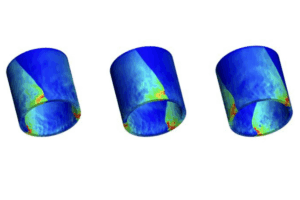AUSTIN, Texas — Between 2007 and 2011, the State of Texas spent $37 million on grants to help high-poverty middle schools reduce obesity through physical education. The grant program, called Texas Fitness Now, provided grants to the poorest 24 percent of Texas middle schools in 2007-09, and it made grants to the poorest 40 percent of middle schools in 2009-11.
Yet a new article by researchers at The University of Texas at Austin reports that Texas Fitness Now had no effect on children’s weight. Middle school obesity rates held steady during Texas Fitness Now, both in schools that received the grants and in schools that did not.

The article, written by Paul von Hippel and Kyle Bradbury at UT Austin’s LBJ School of Public Affairs, is the largest study ever conducted of a physical education (PE) program. Using publicly available data, the authors analyzed obesity rates at more than 1,150 middle schools enrolling more than 770,000 students per year.
Schools spent most of their grants on sports and fitness equipment, according to the article. Although the grants did not reduce obesity, they did increase fitness. The fitness benefits were greatest in measures of strength, and greater for girls than for boys.
As a result of the grants, both boys and girls in high-poverty middle schools could complete more pushups and a faster shuttle run, the researchers found. Girls could also complete more curlups, a higher trunk lift, and had a better sit and reach. But the grants did not increase shoulder flexibility or help children run a mile more quickly.
State guidelines for Texas Fitness Now predicted that the program would improve academic achievement because “through increased fitness, students’ cognitive ability will improve.” Yet the article reached mixed conclusions on the grants’ academic effects. On average, the grants had no effect on math or reading scores, but they may have improved scores among seventh- and eighth-graders who spent two to three years in participating schools.
The research was funded in part by the St. David’s Foundation in Austin, Texas, and published in the peer-reviewed journal Preventive Medicine.
Texas Fitness Now launched in 2007. The program received widespread news coverage, including a segment on the HBO documentary “Weight of the Nation.”
Texas Fitness Now expanded in 2009 but ended in 2011 when the economic recession forced cuts to the state budget. The termination of Texas Fitness Now had no adverse effects, according to the article. Schools kept their grant-purchased equipment, and after termination, participating schools did not see obesity, fitness and achievement levels worsen relative to nonparticipating schools.
PE, obesity, and achievement
Although research has demonstrated that PE can improve fitness, it is unclear whether PE reduces obesity.
The American Heart Association and the Institute of Medicine endorse using PE to reduce child obesity, yet a recent review in the New England Journal of Medicine classified the idea that PE classes reduce obesity as a “myth.” The American Academy of Pediatrics strikes a middle ground, endorsing PE but describing child obesity programs that rely on activity alone as “somewhat disappointing to date.”
A 2013 review by the Cochrane Collaboration found that, out of 11 child obesity programs that relied on physical activity alone, none significantly reduced weight gain in boys, and only one very small program, in France, significantly reduced weight gain in girls.
Programs that combine physical activity with diet have had better results. On paper, Texas Fitness Now required schools to spend 25 percent of their grant funds on nutrition. But the nutrition requirement was not enforced; in 2009-10 only 7 percent of grant funds were spent on nutrition, according to the University of Texas article.
The question of whether PE improves academic achievement is also controversial. In a recent exchange in JAMA Pediatrics, different authors came to opposite conclusions. One set of authors concluded that “participation in physical activity is positively related to academic performance,” but other authors, reviewing the same data, concluded that “physical activity is not related to performance at school.”



